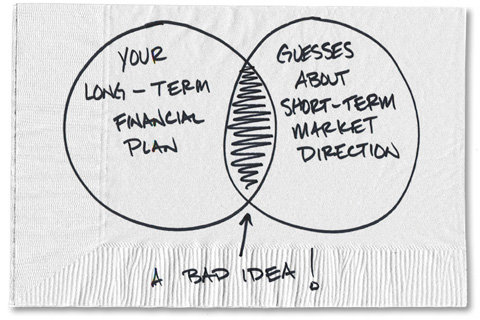Uncertainty about the Federal Reserve’s next step and the potential for a budget showdown in Washington led stock markets to a mixed close on Tuesday.
By the end of trading, the Standard Poor’s 500-stock index was 0.3 percent lower, the Dow Jones industrial average was 0.4 percent lower and the Nasdaq composite gained just under 0.1 percent.
Investors initially celebrated when the Federal Reserve said last week it would refrain from cutting back its huge economic stimulus program. The $85 billion in monthly asset purchases by the Fed helped pump life into the economy and stock markets, but enthusiasm has waned as the reasoning behind the decision — that the United States economy is still weak — began to sink in.
Still, the central bank is still expected to scale back its purchases at one of its upcoming meetings — in late October, in mid-December or sometime early next year, so “tapering” is not off the table.
Tuesday’s data did little to cement expectations of when the Fed may act. A house price report from the Standard Poor’s Case-Shiller index and a consumer confidence survey from the Conference Board were a little softer than expected.
The approaching budget battle between the White House and Republican lawmakers also threw an element of uncertainty at markets. The government will reach its borrowing limit, or debt ceiling, by Oct. 1. If Congress does not raise that limit, the government will not be able to pay all its bills.
Republicans are demanding that any increase must result in expenditure cuts of an equal amount. President Obama is demanding a debt-limit increase with no conditions attached.
“The re-emergence of debt ceiling concerns, along with muddled central bank guidance, has helped to inspire caution rather than risk,” said Brenda Kelly, senior market strategist at IG.
In Europe, the FTSE 100 index of leading British shares closed up 0.2 percent at 6,571.46 while Germany’s DAX rose 0.3 percent to 8,664.60. The CAC 40 in France ended 0.6 percent higher at 4,195.61.
Asian stocks were mostly lower. Japan’s Nikkei 225 fell 0.1 percent, to close at 14,732.61 points. Hong Kong’s Hang Seng dropped 0.8 percent, to 23,179.04. Australia’s SP/ASX 200 shed 0.4 percent, to 5,234.20. South Korea’s Kospi fell 0.1 percent, to 2,007.10.
Trading elsewhere was muted. Among currencies, the euro was down 0.1 percent at $1.3481 while the dollar was flat at 98.80 yen. In the oil markets, a barrel of benchmark New York crude was trading 22 cents lower at $103.37.

Article source: http://www.nytimes.com/2013/09/25/business/daily-stock-market-activity.html?partner=rss&emc=rss



